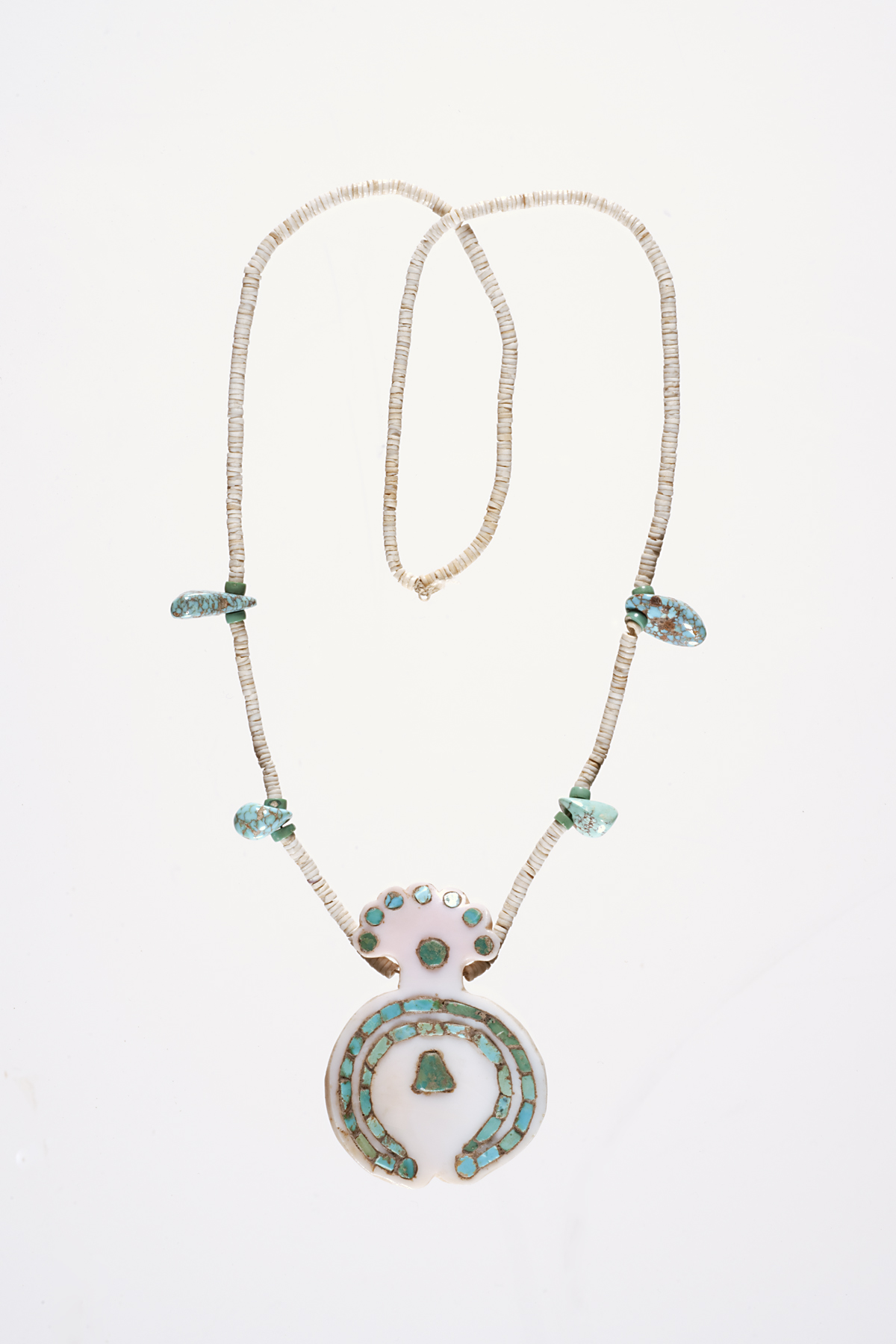necklace with naja pendant, unrecorded A:shiwi or Kewa Pueblo artist
Artwork Overview
necklace with naja pendant,
late 1800s–1954
Where object was made: Southwestern United States
Material/technique: turquoise; abalone shell; bone
Dimensions:
Object Length/Width (Length x Width): 36 x 5 cm
Object Length/Width (Length x Width): 1 15/16 x 14 3/16 in
Object Length/Width (Length x Width): 36 x 5 cm
Object Length/Width (Length x Width): 1 15/16 x 14 3/16 in
Credit line: Source unknown
Accession number: 2007.1495
Not on display
If you wish to reproduce this image, please submit an image request


